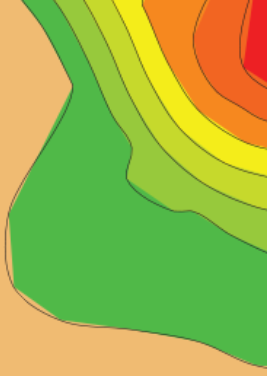The Human Creation and Use of Reactive Nitrogen: A Global and Regional Perspective
IF 16
1区 环境科学与生态学
Q1 ENVIRONMENTAL SCIENCES
Annual Review of Environment and Resources
Pub Date : 2021-08-02
DOI:10.1146/annurev-environ-012420-045120
引用次数: 33
Abstract
More food and energy allow for more people who then require more food and energy, and so it has gone for centuries. At the same time, economic progress leads to a different lifestyle with an increasing demand for energy and food, also accelerating food waste. Fueling this food-energy-population dynamic is an ever-increasing conversion of unreactive dinitrogen (N2) to reactive N (Nr), which then results in a cascade of positive (food and energy for people) and negative (damage to people, climate, biodiversity, and environment) impacts as Nr is distributed throughout Earth systems. The most important step in reducing the environmental impacts of Nr is limiting its human-based creation. In this article, therefore, we focus on this most important first step: the conversion of N2 to Nr by human activities. Specifically, we examine Nr creation and use (they are different!) on a global and regional basis and Nr use on a global and regional per capita basis. In addition, we introduce the metric Nr Use Index (NUI), which can be used to track and project Nr use relative to a fixed point in time. We then assess the progress in Nr management over the past 20 years. Our article presents a case study of the Netherlands to show what one country, beset by Nr-related problems that have led to an N crisis, did to address those problems and what worked and what didn't work. The article concludes with an assessment of what the future might hold with respect to Nr creation and use, including a review of other projections. We expect that NUI will increase especially in Asia, Latin America, and Africa. The other parts of the world are consolidating or even decreasing NUI. In Latin America and Asia, there is limited agricultural land, and by increasing NUI for food the risk of Nr pollution is very high. The Netherlands has shown not only what effects can be expected with increasing NUI but also what successful policies can be introduced to limit environmental losses. Our assessment shows that Nr creation needs to be limited to prevent local to global environmental impacts. Expected final online publication date for the Annual Review of Environment and Resources, Volume 46 is October 2021. Please see http://www.annualreviews.org/page/journal/pubdates for revised estimates.人类创造和使用活性氮:全球和区域视角
更多的食物和能源让更多的人需要更多的食物和能源,就这样持续了几个世纪。与此同时,经济进步导致了不同的生活方式,对能源和食物的需求不断增加,也加速了食物浪费。推动这种食物-能量-人口动态的是不断增加的非活性氮(N2)向活性氮(Nr)的转化,然后导致一系列积极的(为人们提供食物和能源)和消极的(对人类、气候、生物多样性和环境的破坏)影响,因为Nr分布在整个地球系统中。减少Nr对环境影响的最重要的一步是限制其人为创造。因此,在本文中,我们将重点关注最重要的第一步:人类活动将N2转化为Nr。具体来说,我们在全球和地区的基础上研究了Nr的产生和使用(它们是不同的!),并在全球和地区的人均基础上研究了Nr的使用。此外,我们引入了度量的Nr使用指数(NUI),它可以用来跟踪和预测相对于固定时间点的Nr使用情况。然后,我们评估了过去20年来Nr管理的进展。我们的文章展示了荷兰的一个案例研究,展示了一个被与核相关的问题所困扰的国家是如何解决这些问题的,以及哪些是有效的,哪些是无效的。文章最后对未来的Nr创造和使用进行了评估,包括对其他预测的回顾。我们预计NUI将会增加,特别是在亚洲、拉丁美洲和非洲。世界其他地区正在巩固甚至减少NUI。在拉丁美洲和亚洲,农业用地有限,通过增加粮食NUI, Nr污染的风险非常高。荷兰不仅表明增加NUI可以预期产生什么影响,而且表明可以采取哪些成功的政策来限制环境损失。我们的评估表明,需要限制Nr的产生,以防止局部到全球的环境影响。《环境与资源年鉴》第46卷的最终在线出版日期预计为2021年10月。修订后的估计数请参阅http://www.annualreviews.org/page/journal/pubdates。
本文章由计算机程序翻译,如有差异,请以英文原文为准。
求助全文
约1分钟内获得全文
求助全文
来源期刊
CiteScore
24.10
自引率
1.80%
发文量
33
审稿时长
>24 weeks
期刊介绍:
The Annual Review of Environment and Resources, established in 1976, offers authoritative reviews on key environmental science and engineering topics. It covers various subjects, including ecology, conservation science, water and energy resources, atmosphere, oceans, climate change, agriculture, living resources, and the human dimensions of resource use and global change. The journal's recent transition from gated to open access through Annual Reviews' Subscribe to Open program, with all articles published under a CC BY license, enhances the dissemination of knowledge in the field.

 求助内容:
求助内容: 应助结果提醒方式:
应助结果提醒方式:


